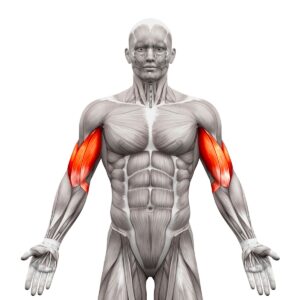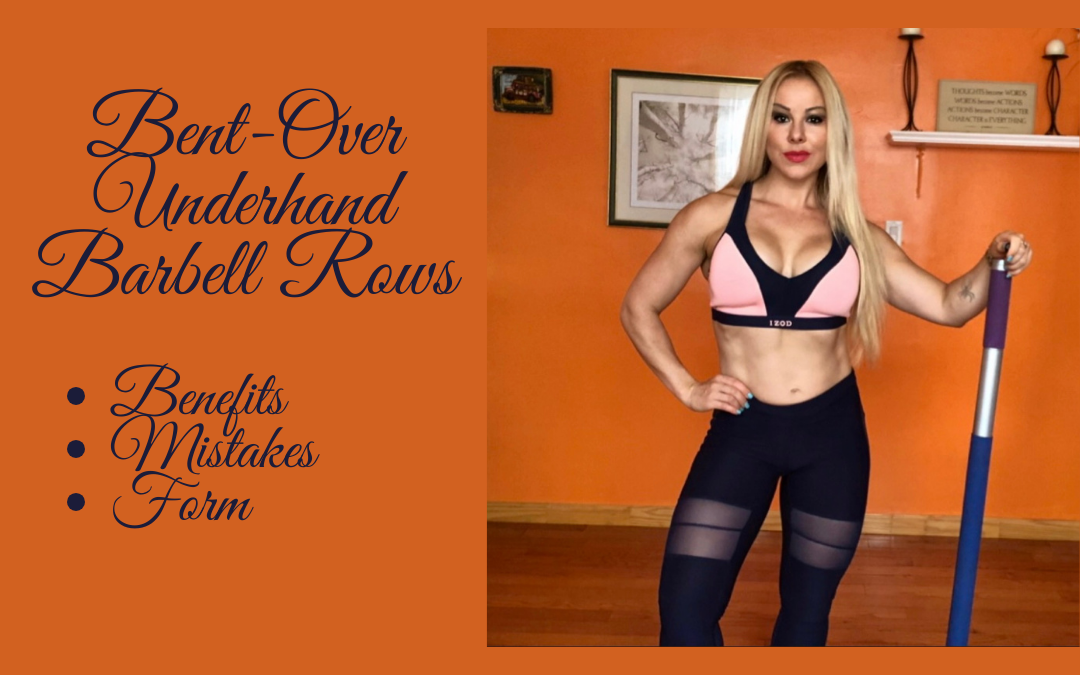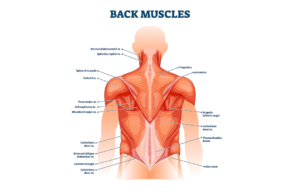Having a strong fit back is a prerequisite if you want to avoid back pain and other problems. Rows are amazing for your body, for your back specifically. As you know, diversity is key when aiming to achieve metabolic and physical changes in the body. A variation of the standard row is the bent-over barbell row.
What Muscles Do Bent-Over Underhand Barbell Rows Work?
The bent-over barbell row is a compound exercise that primarily targets the following muscles in the upper body:
- Latissimus Dorsi: The lats are the large muscles on either side of the mid to lower back, playing the main role in the rowing movement. The underhand grip emphasizes the lower portion of the lats. The lats assist in climbing, rowing, swimming (especially during the downstroke), chopping, raising the trunk upwards, and compressing the thorax and abdomen.
- Rhomboids: These muscles are located between the shoulder blades, lying deep from the trapezius to the scapula. They are involved in pulling the shoulder blades together, retracting, elevating, and rotating the scapula.
- Erector Spinae: The muscles along the spine, lying in the groove to the side of the vertebral column. They are involved in maintaining an erect posture, back and head extension, forward flexion of the thorax, flexion and rotation of the vertebral column and head.
- Trapezius: The traps are the broad, flat, superficial muscles on the posterior area of the neck and upper trunk. These muscles allow and support the spinal column to remain erect, help turn the head, elevate and depress the shoulders, internally rotate the arm, and optimize the scapula position. They are engaged during the bent-over row, particularly the middle and lower portions, retracting and depressing the shoulder blades.
- Biceps Brachii: These are the muscles in the front part of the upper arm. They help lift or lower the forearm, flex the elbow, flex the shoulder, and supinate the forearm. The underhand grip used in the underhand barbell row places additional emphasis on the biceps. While the primary focus is on the back muscles, the biceps act as synergists in the pulling movement.

Benefits of Bent-Over Underhand Barbell Rows
- Hypertrophy: Bent-over underhand barbell rows help develop your back muscles. Plus, the underhand grip puts more emphasis on the biceps, adding an extra dimension to the exercise and promoting balanced arm development.
- Strength: They target the muscles of the upper back and contribute to improved overall back strength, which is essential for various functional movements and athletic performance.
- Variety: Changing the grip orientation can provide a different stimulus to the muscles compared to overhand grip rows, contributing to the activation of different muscles and preventing plateau.
- Improved Range of Motion: The underhand grip allows for a greater range of motion. Some individuals find the underhand grip more comfortable for the shoulder joints compared to the overhand grip, without compromising form.
- Core Engagement: Like other rowing exercises, bent-over underhand barbell rows require core stabilization to maintain proper form. This can contribute to overall core strength and stability.
- Fat Loss and Functionality: Being that this is a compound exercise, you can engage multiple joints and muscle groups simultaneously. This makes bent-over underhand barbell rows very efficient at facilitating higher metabolism and losing body fat.
- Muscle Symmetry: Incorporating different grips and variations into your workout routine can help ensure balanced muscle development, reducing the risk of muscle imbalances and related injuries.
- Enhanced Grip Endurance: Besides contributing to back strength, the underhand grip requires additional forearm and grip strength and endurance.
- Aesthetics: The multiple muscle engagement and movement dynamics help sculpt not only the back but the arms and core as well.
- Lower Back Stability: Bending over strengthens your lower back and stabilizes muscles. This can help you perform other exercises such as deadlifts, squats, and even chest presses.
- Back Pain: Having strong back muscles prevents and helps you deal with back pain.
- Simplicity: This is a simple exercise and you only need a barbell to perform it.
How to Do Bent-Over Underhand Barbell Rows
Here’s how you can perform the bent-over underhand barbell row with proper form:
-
- Stand with your feet shoulder-width apart.
- Position the barbell in front of you at hip level.
- Bend at your hips and knees to lower your torso until it’s almost parallel to the floor.
- Grasp the barbell with an underhand grip (palms facing away from you), hands slightly wider than shoulder-width apart.
- Keep your back straight and chest up, and engage your core for stability.
- Bend over and as you exhale, pull the barbell towards your lower chest or upper abdomen by retracting your shoulder blades.
- Keep your elbows close to your body as you lift the barbell.
- Squeeze your back muscles at the top of the movement for a couple of seconds to maximize contraction.
- As you inhale, lower the barbell back down in a controlled manner, keeping your back straight.
- Repeat for the desired amount of repetitions.
Bent-Over Underhand Barbell Rows’ Mistakes
- Not Keeping a Straight Back: Rounding the back or hyperextending your back (arching it) can lead to lower back strain or injury. Keep your back straight throughout the movement.
- Using Too Much Weight: Use a weight that allows you to maintain proper form and control. Start with a lightweight to ensure proper form before adding more weight.
- Incomplete Range of Motion: Ensure you lower the barbell fully and extend your arms completely on each repetition.
- Bouncing the Weight: If you have to jerk the weight, you should lower the weight. This also increases the risk of injury and removes the tension from the targeted muscles. It is always best to lift the weight in a controlled manner. Avoid using excessive momentum.
- Not Bending Over Enough: Doing the exercise in more of an upright position than a bent position withdraws the tension away from the back muscles and moves it towards the shoulders. Bend over so you keep the tension on the back.
- Looking Up: Looking up or looking down can strain your neck. Keep your head in a neutral position, aligned with your spine.
Bent-Over Underhand Barbell Row Video
Back Workout
Barbell Row Variations
As you can see the bent-over barbell row is a powerful back exercise. It can be performed with different hand grips and body positions, which provide diverse results (You can also perform rows with dumbbells instead of a barbell).
Here are some variations of the bent-over barbell row:
- Overhand or pronated grip is when your hands are positioned on top of the barbell instead of underneath. In the starting position, when the bar is resting by your tights, you grasp the barbell with your palms facing your body.
- Yates rows are performed by bending your torso forward and positioning your back at about a 45-degree angle. The shallow angle allows you to use more weight. This position hits the upper back and traps primarily and avoids putting too much pressure on the lower back.
- Pendlay rows are performed at a 90-degree bend so your back is parallel to the floor. During this movement, you put the bar down on the floor every repetition, highly stimulating the lats.
Additionally, you can complete your back workout with the following exercises:
Bent-over underhand barbell rows offer numerous benefits associated with back and bicep hypertrophy and strength, as well as overall functionality and back health. Now that you know how to properly perform bent-over underhand barbell rows, you can avoid the most common mistakes associated with this exercise.
Lift, Burn more Fat, Get Stronger, and Live Healthier!
To a Fitter Healthier You,
The Fitness Wellness Mentor




